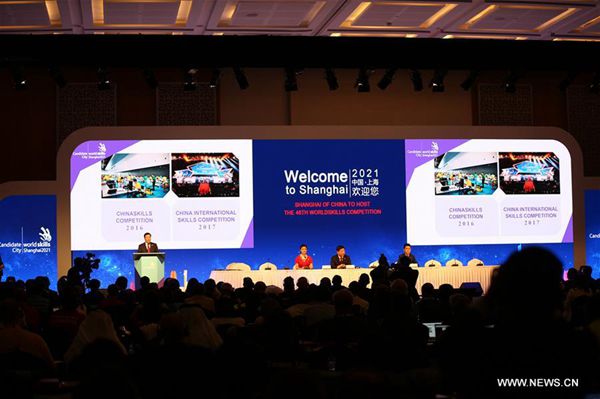Xi sends video message to WorldSkills Competition
|
|
|
Photo taken on Oct. 13, 2017 shows the meeting attended by members of the WorldSkills International in Abu Dhabi, United Arab Emirates (UAE). Members of the WorldSkills International voted Friday that the 46th WorldSkills Competition would be held in the Chinese city of Shanghai. (Xinhua/Su Xiaopo) |
Chinese President Xi Jinping on Friday sent a video message in support for China’s bid to host the WorldSkills Competition before the vote in Abu Dhabi.
Xi said that on behalf of the Chinese government and people he firmly supports Shanghai’s bid to host the 46th WorldSkills Competition in 2021, and gave his assurance that the city would be ready to host an innovative and influential event.
Members of the WorldSkills International voted Friday that the 46th WorldSkills Competition would be held in the Chinese city of Shanghai.
Xi said in his message before the vote that the competition would promote international exchanges and cooperation in vocational skills, drive the Chinese people especially nearly 200 million young people to take up new skills, and offer a chance for China to contribute to global skills development.
The Chinese government is willing to be involved across the board and will continue to make its contribution to global poverty reduction and sustainable development, Xi said in the message.
The bid team, including Yin Weimin, minister of human resources and social security, and Ying Yong, mayor of Shanghai, gave presentations.
The WorldSkills Competition dates back to 1950, when it was first held in Madrid, Spain. The biennial event seeks to increase the awareness and prestige of vocational and blue-collar professions. China first participated in the event in 2011.
